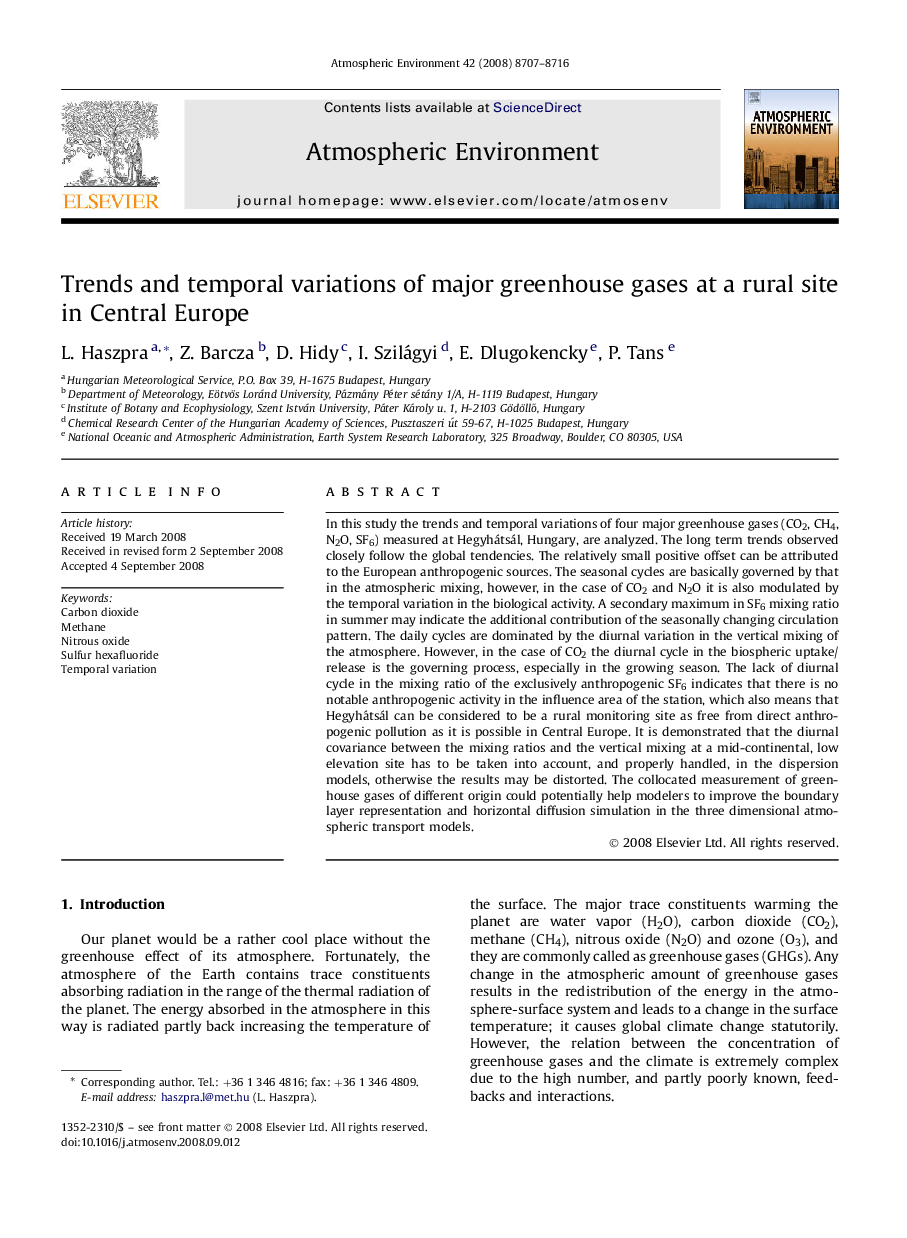| Article ID | Journal | Published Year | Pages | File Type |
|---|---|---|---|---|
| 4442355 | Atmospheric Environment | 2008 | 10 Pages |
In this study the trends and temporal variations of four major greenhouse gases (CO2, CH4, N2O, SF6) measured at Hegyhátsál, Hungary, are analyzed. The long term trends observed closely follow the global tendencies. The relatively small positive offset can be attributed to the European anthropogenic sources. The seasonal cycles are basically governed by that in the atmospheric mixing, however, in the case of CO2 and N2O it is also modulated by the temporal variation in the biological activity. A secondary maximum in SF6 mixing ratio in summer may indicate the additional contribution of the seasonally changing circulation pattern. The daily cycles are dominated by the diurnal variation in the vertical mixing of the atmosphere. However, in the case of CO2 the diurnal cycle in the biospheric uptake/release is the governing process, especially in the growing season. The lack of diurnal cycle in the mixing ratio of the exclusively anthropogenic SF6 indicates that there is no notable anthropogenic activity in the influence area of the station, which also means that Hegyhátsál can be considered to be a rural monitoring site as free from direct anthropogenic pollution as it is possible in Central Europe. It is demonstrated that the diurnal covariance between the mixing ratios and the vertical mixing at a mid-continental, low elevation site has to be taken into account, and properly handled, in the dispersion models, otherwise the results may be distorted. The collocated measurement of greenhouse gases of different origin could potentially help modelers to improve the boundary layer representation and horizontal diffusion simulation in the three dimensional atmospheric transport models.
